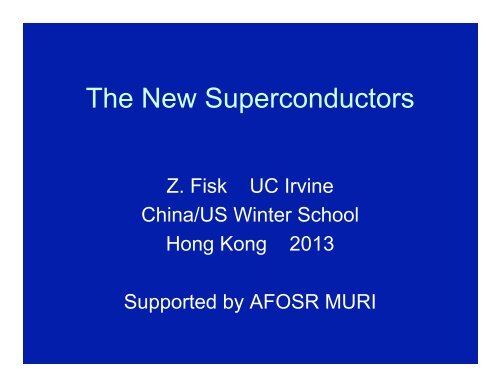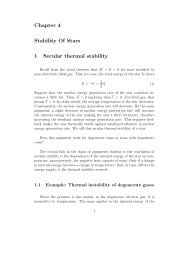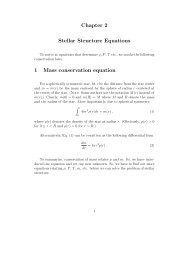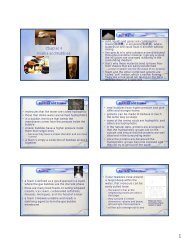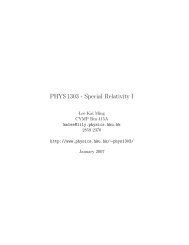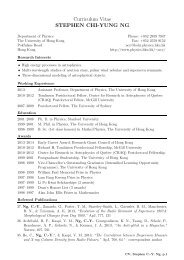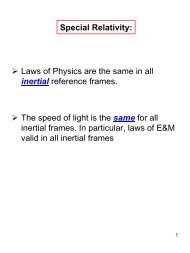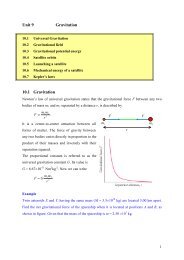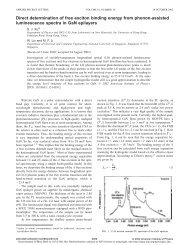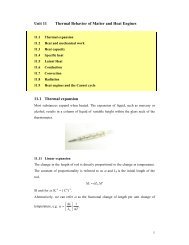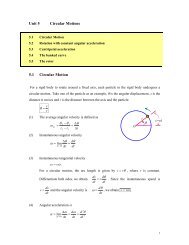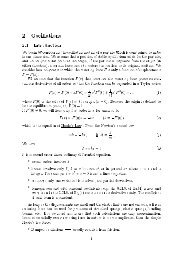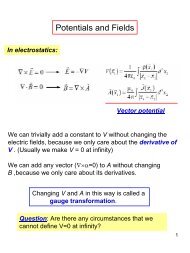The New Superconductors Hong Kong - Department of Physics, HKU
The New Superconductors Hong Kong - Department of Physics, HKU
The New Superconductors Hong Kong - Department of Physics, HKU
Create successful ePaper yourself
Turn your PDF publications into a flip-book with our unique Google optimized e-Paper software.
<strong>The</strong> <strong>New</strong> <strong>Superconductors</strong><br />
Z. Fisk UC Irvine<br />
China/US Winter School<br />
<strong>Hong</strong> <strong>Kong</strong> 2013<br />
Supported by AFOSR MURI
What does the record tell us?<br />
• What drives materials discovery?<br />
• What is role <strong>of</strong> theory?<br />
• What constitutes a breakthrough?<br />
• Will there be a room temperature<br />
superconductor?
Where do we find superconductivity?<br />
• High temperature phases<br />
• Mo and W films<br />
• Magnetic elements: Fe, Cr<br />
• 4f elements: Ce, Eu<br />
• 5f elements: U, Am<br />
• Cluster compounds
Uranium under pressure
1950s: the Edisonian approach to discovering<br />
new superconductors<br />
and the era <strong>of</strong> conventional superconductivity<br />
Fermi: systematics <strong>of</strong> materials may give a clue
Batterman and Barrett Phys. Rev. 145, 296 (1966)
C. W. Chu V 3 Si: T Martensitic / T c
1957 the Bardeen-Cooper-<br />
Schrieffer theory arrives<br />
T c = T lattice e -1/NV
timeline <strong>of</strong> maximum superconducting transition<br />
temperature T c
Superconductivity at the<br />
border with Magnetism<br />
• superconducting/magnetic interface<br />
competition —› co-habitation —›<br />
marriage<br />
• vast broadening <strong>of</strong> materials phase<br />
space
1979: Heavy Fermions: superconductivity marries<br />
magnetism, its enemy, in CeCu 2 Si 2 (T c = 0.5K)
Mathur et al. Nature 394, 39 (1998)
Phase diagram <strong>of</strong> CeRhIn 5 (Park and Thompson)
What happens at T c in heavy Fermions?<br />
• Superconductivity opens a gap in the<br />
electronic spectrum at the Fermi surface<br />
• <strong>The</strong> electronic spectrum carries strong<br />
magnetic fluctuations that can mediate<br />
superconductivity or magnetic order<br />
• Establishing superconductivity can be seen<br />
as resolving the opposed conflict <strong>of</strong> local<br />
moment magnetism versus non-local itinerant<br />
electronic states
Stock et al. Phys. Rev. Lett. 100, 087001 (2008)
M. Nicholas et al. Phys. Rev. B 76, 052401 (2007)
1986: the new age <strong>of</strong> cuprates<br />
La 1.84 Sr 0.16 CuO 4<br />
T c = 40K
generic cuprate phase diagram
the new iron age: pnictides T c = 56K<br />
Wolfgang Jeitschko
the path to this new material
M. Norman <strong>Physics</strong>
Onward and upward?<br />
• the record says that T c is raised by<br />
finding new classes <strong>of</strong> materials<br />
• maximum T c within each class appears<br />
near a boundary separating local and<br />
non-local physics<br />
• no obvious maximum to T c


